24TH ANNUAL
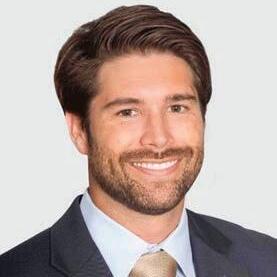


Read more on PAGE 10


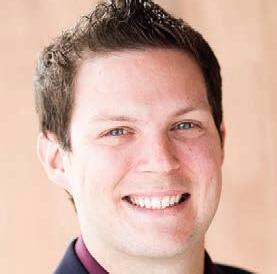




NO. 3 VOL. XXXVIII
Parisima Jassim Jassim Law
David Potter Chelsea Investments
Jolyana Jirjees Chaldean Community Council
Kristel Nichols Jamul Casino
Kyle Boyce Latitude 33
Jordan Lerner Host Health Care
Justin R. Giles Latitude 33
2023 | ISSUE 3 Volume XXXVIII
Our mission is to always provide quality journalism for our readers by being fair, accurate and ethical and a credible resource for our advertisers.
COVER STORY: 40 Under 40

This celebration started in 1999 and, since then, 960 of San Diego’s most outstanding young people have been honored. Meet this year’s 40 Under 40, the Class of 2023, starting on page 10.
Chairman | CEO
Robert Page BobPage@sandiegometro.com
Publisher Rebeca Page RebecaPage@sandiegometro.com
Managing Editor Manny Cruz Manny@sandiegometro.com
Associate Editor Douglas R. Page dpage@sandiegometro.com
ILLUMINA’S GENOMIC TECHNOLOGIES ENABLE BETTER PATHOGEN PREPARDNESS AND RESPONSE
Following the boost in sequencing infrastructure and capabilities driven by the COVID-19 pandemic, today genomic technologies are enabling public health agencies and healthcare systems to better prepare for, and respond to, pathogenic threats. Story on page 4.

BOOK REVIEW: BATTLING GODZILLA: INFLATION, RECESSION AND THE FIGHT AGAINST THE COVID-19 ECONOMY
There may be no greater economic menaces than inflation and recession. In this new book, HSBC economic advisor Stephen D. King shows how COVID-19 damaged the U.S., European and British economies. Review on page 22.

Graphic Designer Christopher Baker cbaker@sandiegometro.com
Photography/Illustration
Benjamin Myers Jim Childers
Contributing Writers
Marsha Sutton
Alexi Koseff
David Rottenberg
Myrna Marston
Marlise Kast-Myers
Advertising SALES & MARKETING DIRECTOR

Rebeca Page
Get in the loop with SD Metro’s Daily Business Report. Sign up for daily emails on the latest business at sandiegometro.com
P.O. BOX 3679 RANCHO SANTA FE, CA 92067 858.461.4484
JAMUL CASINO PLANS NEW HOTEL

Having secured a $515 million loan, the Jamul Casino will soon build a long-planned 16-story boutique hotel that will have 200 rooms, including 52 suites. Jamul Casino President Mary Cheeks describes it as their most desired development. Story on page 24.
ROPED IN BY WYOMING

Writer Mary Kast-Myers details the first time she and her husband traveled to “The Equality State.” “Neither of us had ever been, nor did we know a great deal about the Equality State, other than it was home to national parks and had the lowest population density in the nation,” she writes. Story on page 28.
SD METRO magazine is published by REP Publishing, Inc. The entire contents of SD METRO is copyrighted, 2022, by REP Publishing, Inc. Reproduction in whole or in part is prohibited without prior written consent. All rights reserved. All editorial and advertising inquires can be made by calling or writing to the above. Editorial and ad deadline is the 24th of the month preceding the month of publication. Mail subscriptions of SD METRO are available for $50 a year for addresses within the United States. A PDF version of this issue is available at sandiegometro.com Additional information, including past articles, online-only content and the Daily Business Report can be found at sandiegometro.com. For reprints or plaques of articles published in SD METRO please call Rebeca Page at 858-461-4484
All real estate advertising in this newspaper is subject to the Fair Housing Act which makes it illegal to advertise “any Preference limitation or discrimination based on race, color, religion, sex, handicap, familial status, or national origin, or an intention, to make any preference, limitation or discrimination. “Familial status includes children under the age of 18 living with parents or legal custodians; pregnant women and people securing custody of children under 18. This magazine will not knowingly accept any advertising for real estate which in in violation of this law. Our readers are hereby informed that all dwellings advertised in this magazine are available on an equal opportunity basis. To complain of discrimination call HUD Toll-Free at 1-800-669-9777. Th Toll-free telephone number for the hearing impaired is 1-800-927-9275.
Read us online:
sandiegometro.com
4 22 24 28 10 SANDIEGOMETRO.COM | NO. 3 VOL. XXXVIII | 38TH ANNIVERSARY 1985-2023 2

3 38TH ANNIVERSARY 1985-2023 | NO. 2 VOL. XXXVIII | SANDIEGOMETRO.COM
Illumina's genomic technologies enable better pathogen preparedness and response
Illumina Inc. (NASDAQ: ILMN), a global leader in DNA sequencing and array-based technologies, today recognized the progress and impact of genomic technologies on pathogen preparedness and response. Following the boost in sequencing infrastructure and capabilities driven by the COVID-19 pandemic, today genomic technologies are enabling public health agencies and health care systems to better prepare for, and respond to, pathogenic threats.
From the onset of the pandemic in 2020, Illumina's pathogen genomic surveillance solutions were deployed to characterize the genome of SARS-CoV-2, catalyze development and updates to vaccines and diagnostics, identify virus variants of concern, and monitor the virus's evolution and spread. As the World Health Organization (WHO) and countries including the United States have begun declaring an end to their states of public

health emergency, COVID-19 continues to present a complicated global public health challenge.
"Even with the end of the public health emergency, there are individuals, communities, and economies deeply impacted by the COVID-19 pandemic; continued vigilance by public health agencies and access to testing, genomic surveillance, vaccines, and treatments is required," said Dr. Phil Febbo, chief medical officer of Illumina. "While we all want to move past the pandemic, by building on the capabilities established during that time, we have the opportunity to keep COIVD-19 controlled and become better prepared for the predictable introduction of future pathogens."
Genomic surveillance
According to the WHO, genomic surveillance is "the process of constantly monitoring pathogens and analyzing their
genetic similarities and differences." It has already been used in a focused way with relatively limited capacity to track pathogens, for example in 2013 by the Food and Drug Administration for its GenomeTrackr program, which gathered data from over 100 laboratories performing routine surveillance of the American food supply, many using Illumina technology. This program run in partnership with the US Centers for Disease Control and Prevention (CDC) and Department of Agriculture, enhanced monitoring for foodborne pathogens, and guided the response to foodborne disease outbreaks. The COVID-19 pandemic accelerated the adoption of genomic surveillance atscale to support the global response and reduced the barriers for sharing data internationally. This enabled the tracking of viral evolution and movement in the global population in a manner, scale and timeframe not previously possible. By
SANDIEGOMETRO.COM | NO. 3 VOL. XXXVIII | 38TH ANNIVERSARY 1985-2023 4

sequencing the genomes of dangerous pathogens, today scientists can better understand how they spread and how to best control them to protect human and animal health as well as the environment.
Since 2020, these expanded capabilities have been applied to public health threats in the US, including mpox, highly pathogenic avian influenza, and other notable respiratory pathogens. Surveillance data provides scientists with a clearer picture from which public health officials can make recommendations and manage outbreaks.
For example, officials at the city, county, and state levels across the US have begun using Illumina technology to conduct wastewater surveillance for SARS-CoV-2, polio, and pathogens whose antimicrobial resistance poses an existential threat to human health.
A recently published article in The Lancet says, “A global aircraft-based wastewater genomic surveillance network for early warning of future pandemics,” and that this type of surveillance could be a critical component of a comprehensive global pandemic early warning system.
Outside of United States, the genomic surveillance infrastructure and framework developed in response to COVID-19 has already been applied to respond to outbreaks of other viral threats, such as Marburg virus in Tanzania and Ebola virus in Uganda. In Brazil, Illumina genomic surveillance solutions played a critical role in the response to a major Dengue virus outbreak, supporting the public health response.
A proactive approach
"There is significant work underway globally to build capacity and capabilities to enable pandemic preparedness and response," said Vanessa Moeder, senior director of Global Health at Illumina. "We need to establish clear expectations for future pathogen surveillance—with defined targets to detect, investigate, and
respond to potential threats. Genomics plays a profound role in robust surveillance efforts. By enabling comprehensive characterization of circulating pathogens, we can deeply understand them, rapidly respond with countermeasures, and ultimately save lives. It helps move public health officials from a reactive to more proactive position."
Beginning in 2021, a rise in reported outbreaks in hospitals and nursing homes of the dangerous fungus Candida auris called for quick genomic surveillance activation to identify where infections were occurring. In an article featured on Illumina.com, Andrew Gorzalski, PhD, Nevada State Health Lab molecular supervisor, commented on how the more robust sequencing infrastructure his lab established to monitor COVID-19 bolstered its readiness to respond to subsequent threats.
"We're getting sequencing results out faster than we're getting susceptibility results back from our regional laboratory, so that allows us to identify those infections that are genotypically drug resistant, and then pass that information along to epidemiologists," he said.
C. auris is just one of many multidrugresistant, health-care-associated infections that American health systems are monitoring through genomics. The Enhanced Detection System for Healthcare-Associated Transmission, established by infectious disease experts at the University of Pittsburgh School of Medicine and funded by the National Institute of Health, combines routine genomic surveillance of bacterial pathogens with machine learning and data mining of electronic medical records to identify outbreaks not detected by traditional methods.
Expanding access to genomic technology globally
As Illumina celebrates its 25th anniversary in 2023, its mission of
unlocking the power of the genome includes expanding access to genomic capabilities, to ensure their benefits are available to all.
The pandemic spurred an expansion of next-generation sequencing infrastructure in countries and regions that previously had little or no access to it.
In Africa, several programs, including the Pathogen Genomics Initiative, have rapidly expanded capacity and knowledge. Africa CDC has set the target for all 55 African Union member countries to establish next-generation sequencing capacity and pathogen genomics capabilities within the next two years. This will enable countries to better manage their own unique infectious disease threats, rather than having to ship samples to Europe or the US, which leads to prolonged response times.
In Central and South America, over 30 nations and territories now actively participate in the COVID-19 Genomics Surveillance Regional Network (COVIGEN). This represents a vital expansion of sequencing capacity in the region since the network's establishment in early 2020. Pan American Health Organization member states committed in 2022 to expanding pathogen genomics capacity in the region over the next five years.
"Maintaining focus on the importance of preparedness and response is critical," said Moeder. "We are committed to remaining at the forefront of leveraging genomics against infectious disease and partnering worldwide to share expertise to ensure that these capabilities are available everywhere, so that pathogens have nowhere to hide."
SANDIEGOMETRO.COM | NO. 3 VOL. XXXVIII | 38TH ANNIVERSARY 1985-2023 6 SCIENCE
CONGRATULATIONS JOLYANA JIRJEES
On being recognized as one of San Diego Metro’s 40 Under 40, and for your leadership and dedication to CCC’s efforts in equipping Chaldean newcomers with the tools and support they need to thrive in their new community.

chaldeancouncil.org

info@chaldeancouncil.org
Slo Down in Paso Robles
hot stuff. Hidden in plain sight right between Los Angeles and San Francisco, what was once one of California’s best-kept secrets is now on the tip of everyone’s tongue. So, how did the wine world’s wild west become a world class destination? With a little faith, a lot of farming, and some damn fine wine.
The town of Paso (or, El Paso de Robles, if you’re fancy) was co-founded by the more reasonable uncle of famous outlaws, Frank and Jesse James. Uncle Drury was a cattleman of vision, determined to tap the magical properties of Paso’s natural mineral springs and turn the town into a health resort. Even the James boys took advantage. Jesse, who’d been shot, spent a few months healing and pretending to be a cowboy until Uncle Drury lost his patience and put the boys on a slow boat back to New York.
Fast forward to the 1950’s and you’d find a quiet town and a great place to stretch your
a few vineyards tucked into the agriculture, mostly thanks to a Polish statesman and bon vivant (Paso’s own Great Gatsby) who snatched up 2,000 acres and planted some Petite Sirah and Zinfandel.
In the 1980s, when Cabernet Sauvignon was wrapping its vines around America, Paso Robles was still a pitstop. Over the next few years, Paso wine country exploded. Producers looking to make wine without the Napa price tag headed south and set up shop.
Serious winemakers went down to kick the dirt and what they saw inspired a deep, unquenchable thirst.
This was terroir that could rival the best in the world. About 10 miles west of Paso Robles, calcareous shale soils are reminiscent of the Rhone Valley. With the Templeton Gap delivering fresh marine breezes in the morning and sharp temperature spikes during the daylight hours, savvy producers saw the

east side of Paso, warm days and cold nights help the region’s Cabernet Sauvignon maintain wonderful natural acidity. The rolling hills flanking the Salinas River are covered with sandy, loamy soils. Each subregion tells its own story, an enthralling tale of terroir that brought more and more winemakers into the fold.
Today’s Paso Robles is crowded with winemakers taking full advantage of the magnificent grape-growing conditions across the region. Advanced viticulture and winemaking techniques just keep raising the bar and turning up the heat down south. We’d love to share the winemakers we think are getting it right, at every price point.
SANDIEGOMETRO.COM | NO. 3 VOL. XXXVIII | 38TH ANNIVERSARY 1985-2023 8 WINE


9 38TH ANNIVERSARY 1985-2023 | NO. 3 VOL. XXXVIII | SANDIEGOMETRO.COM jamulcasinosd.com
Congratulations to our own Director of Marketing, Kristel Nichols, on being named to San Diego’s 40 Under 40. A former professional dancer, Kristel has proven that she’s as talented a marketing director and leader as she was on the stage. We applaud her on this well-deserved achievement!
Here’s to a STAR performer who always thrives in the spotlight.
INTRODUCING THE 24TH ANNUAL class of 2023
40 Under 40 is San Diego’s premier event honoring outstanding young leaders.
Sponsored by SD METRO Magazine, 40 Under 40 began in 1999, making this the 24th consecutive year. Over this period of time 960 of San Diego’s most outstanding young people have been honored.

PARISIMA JASSIM
Jassim has devoted her practice at Jassim Law to serving people. She specializes in representation of the injured and families who have lost a loved one due to no fault of their own. She works tirelessly to represent her clients and yields stellar results on their behalf in the most difficult cases. She was born in Iran and migrated to the United States at age 14. She did not speak English. She mastered the language and graduated with honors from San Diego State University, California Western School of Law and passed the California State Bar Exam on her first try. She is co-chair of the Lawyers Club of San Diego, Red White & Brew Committee to raise money for “at risk” women in San Diego battling sexual and domestic violence. She most recently obtained a $9 million settlement on behalf of clients who were hit near head on by a commercial truck. Though the collision was entirely the fault of the semi-truck driver, the insurance company denied responsibility. Through several depositions, she secured the verdict on behalf of her clients. She has won many other multi-million dollar settlements, including an $8 million confidential settlement against a rideshare company. She has been recognized as a Super Lawyer for six years.
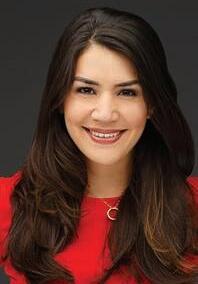
SANDIEGOMETRO.COM | NO. 3 VOL. XXXVIII | 38TH ANNIVERSARY 1985-2023 10
DAVID POTTER
Potter is the director of development at Chelsea Investment Corporation. As housing issues in California have had a profound impact on San Diego’s quality of life, he has had 18 years of experience in multi-family/mixeduse development, financing, and asset management in southern California. As director of development with Chelsea, a leading affordable housing developer in the Pacific Southwest, he oversees a team of development professionals with a portfolio of 18 active projects throughout California, Arizona and New Mexico. He brings a wide range of experience in the multifamily and commercial sectors, including acquisitions, institutional asset/portfolio management, development, dispositions and finance. He has been involved in the planning and development of over 8,000 units across California and Arizona. He is a native San Diegan and takes great pride in his involvement with nonprofit organizations that makes the lives of San Diegans better. He is a member of the board of directors for HomeAid San Diego. He is a longtime supporter of Habitat for Humanity, where he is a designated Experienced Worker and has contributed to multiple projects across southern California. He has both undergraduate and graduate degrees from the University of Southern California and the University of California Berkeley.

JOLYANA JIRJEES

She is the director of operations for the Chaldean Community Center in El Cajon. She was born in Mosul, Iraq. In 2011, six months pregnant with her first child, she and her husband fled Iraq due to the Muslim attacks. The local Christian community in Mosul faced wide-spread abuses, including forced expulsion from their historic homelands. As Jolyana said, “Growing up it was not safe, and we lived in terror.” She began working at the Chaldean Community Council in 2021 at the time when it was only involved in media broadcasting. She expanded the non-profit organization by providing social services to underprivileged and underrepresented refugee families in El Cajon. During COVID-19, it was the only non-profit in El Cajon that was helping people learn of and sign up for benefits that were available to them, including education, job training, health and wellness, housing assistance, legal assistance and immigrant and refugee support. She established a medical program that finds health insurance coverage for eligible low-income individuals and families and created a Computer Literacy Program to provide training on the use of computers and laptops. She is a graduate of San Diego State University with a bachelor’s in sociology and counseling. At SDSU, she was awarded an Award for Excellence in Community Engagement and is now on course to earning her master’s degree in counseling.

KRISTEL NICHOLS
Nichols is the director of marketing for the Jamul Casino. She is an exceptional talent, equally comfortable in a board room and on stage, as a professional performer. She is responsible for Jamul’s data-driven marketing strategy to increase response time and maximize profits. By focusing on technological efficiencies, she aims to deliver easy-to-navigate digital interactions with Jamul guests, as well as operational efficiencies within the team. She is also responsible for leading property-wide entertainment initiatives, with a focus on presenting high-class, unique, and unforgettable experiences. She is also skilled on the stage as an accomplished performer. As a dancer, singer, and actress, she has an extensive portfolio of performance experience throughout the region and on film. She began her professional career at 18, as a cast member and dance captain on the Holland American Cruise line. After three contracts, she set her sights on Las Vegas, where she was a featured dancer in multiple shows, including Pin Up at The Stratosphere. She also spent a year abroad in the European tour of Speed with Holiday on Ice and was a featured dancer in the film, “Think Like a Man Too.” She is professionally trained in vocal performance, as well as ballet, jazz, tap, contemporary and pointe. She volunteers with the annual Blind Date Gala for Blind Connection, and helped coordinate a company called Holiday Coat Drive to benefit HELP in Southern Nevada. She is a magma cum laude graduate of the University of Nevada Las Vegas (UNLV) with a degree in business administration, marketing.
KYLE BOYCE
Boyce is an associate with Latitude 33 Planning & Engineering, being the engineering lead on local projects totaling more than $3 billion. In his 10 years as a civil engineer, he has gained substantial experience while working on institutional, civic healthcare and life science projects across southern California. He is proficient in project management, civil engineering design, campus masterplans in a phased setting, permit processing and construction support. He is often assigned Latitude 33’s large-scale developments. He has served as Latitude 33’s team leader for some of the firm’s most high-profile projects, including the $2.5 billion UC San Diego Hillcrest Campus Redevelopment. His projects also include UC San Diego Altman Clinical and Translational Research Institute, UC San Diego Mesa Nueva, and San Diego County Sheriff’s Department Regional Crime Lab. He earned his B.A. Applied Science in Civil Engineering from San Diego State University. He is skilled at highlighting constructibility issues early and the ability to ensue that multiple design and construction schedules are coordinated for complex projects. He is passionate about teaching students around San Diego County the opportunities in STEM and beyond.
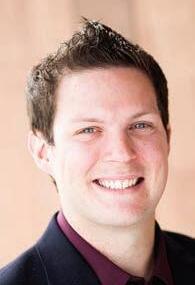
11 38TH ANNIVERSARY 1985-2023 | NO. 3 VOL. XXXVIII | SANDIEGOMETRO.COM 40 UNDER 40
HALEY HOWE
Howe started at the bottom of the business as a call taker at Bill Howe Plumbing. She is now the general manager of the Restoration & Flood Division where she holds the company’s General Contractor license, allowing the company to perform construction on commercial and residential projects. She holds a position of leadership in a male-dominated industry and has created revenue growth of 209% in her division. She manages a company of 61 employees with an annual revenue base of $11 million. She was grown her team 10% year over year and has restructured the division to provide long-term career paths for employees. She has deployed a new project management system through Monday.com that streamlines operations. She is a certified Water Restoration Technician. She is a volunteer at the San Diego Food Bank and Father Joe’s Villages. She has built shelters in Tijuana utilizing her welding and concrete construction skills. She is also active in community sports and plays on a local ice hockey team and roller derby team for fun. She is a mother of two and was a competitive figure skater for eight years. She is proud to be part of the family business and being able to provide rewarding career opportunities for the community.
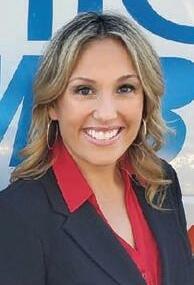
DR. TINA NGO BARTEL

Dr. Bartel is director of the Center of Excellence for the San Diego and Imperial Counties Community Colleges. She has worked in higher education for nearly six years and conducted labor market research for 10 years. She has worked for the San Diego Workforce Partnership. In her role, she leads market research and data to support academic programming and help advance the economic and social mobility of students. San Diego organizations have used her research to raises $20 million in grants for education and workforce development. She earned her doctorate in Educational Leadership from the University of California San Diego (UCSD). She was director of research and business programs at San Diego Workforce Partnership, spearheading their priority sectors between 2012 and 2017, including advanced manufacturing, clean energy, and health care. She led the Strong Workforce Faculty Institute, a professional development program which had a 91% completion rate among participants.
RYAN KING
King is senior vice president and founder of Voit Private Client Group, representing family offices and high net worth individuals across southern California. He is among the youngest partners in the firm. He has qualified as a Top Producer across all offices every year since 2014 and has been in the top five brokers at VOIT San Diego (2017, 2019, 2020 and 2022). He started his career at Cushman & Wakefield in 2010. In 2018, he transacted on the Santa Fe Depot, a high-profile transaction which gathered interest from investors across the world. In 2019, he transacted the largest medical lease in San Diego history with the VA Hospital at 8875 Aero Drive for $148 million. In 2022, he transacted one of the largest land residential development sites representing Pacifica Companies on a $33 million acquisition for over seven acres along the I-5. The deal was highly complicated and involved an additional $20 million buyout for the tenant. It was recently sold to UCSD for over $100 million. He is a graduate of the University of San Diego.

GEORGE A RIOS III
Rios is an associate at Dinsmore Law. He is active in the legal community. He served as the 2020-21 president of the San Diego La Raza Lawyers Association. During his term as president of La Raza he created a new non-profit arm to benefit San Diego’s diverse community. He secured $200,000 grant for programs that mentor k-12 students. He is a board member of the St. Augustine Alumni Association and the San Diego Law Library Foundation. Mayor Gloria appointed him to his Latinx Advisory Group to tackle the unique challenges facing Latinx communities. He sits on the San Diego County Bar Association’s Leadership Speaker Series subcommittee. He is a member of the Hispanic National Bar Association. He is a graduate of San Diego State University and the Loyola School of Law in Los Angeles.
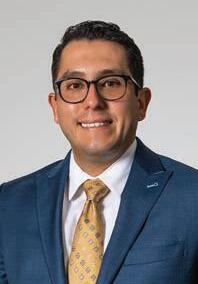
SANDIEGOMETRO.COM | NO. 3 VOL. XXXVIII | 38TH ANNIVERSARY 1985-2023 12 40 UNDER 40
40 UNDER 40

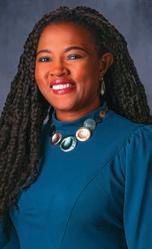

Sapient Logic is an SBA(8)a certified, minority-owned firm that delivers excellent software and systems-related engineering solutions to our private and DoD customers.

Services includes:
• Artificial Intelligence Development
• Software Development & IT Operations
• Network Engineering & Application Integration

• Cybersecurity & Network Operations
• Medical Practice Management
• DEI/ERG Keynotes
• Employee Resource Group Consulting
• Career Accelerator For Immigrants & ERG Leaders

13 38TH ANNIVERSARY 1985-2023 | NO. 3 VOL. XXXVIII | SANDIEGOMETRO.COM
Congratulations to LOLA ADEYEMO on being named one of SAN DIEGO’S 2023
HILARY DARGAVELL

She is the chief of operations at RJS Law Firm. She is a jack-of-all trades who works tirelessly and is not afraid to roll up her sleeves and tackle any task ranging from administrative duties to managing multiple properties and orchestrating complex events. She is a strategic thinker who always keeps the big picture in mind, while being meticulous in her attention to detail. She is responsible for overseeing the day-today operations of the firm and she does so with exceptional skill and grace. She is a natural leader who inspires her colleagues to work harder and smarter. She is always willing to go above and beyond to ensure that the firm is running smoothly. She can make tough financial decisions with confidence and clarity. She has a clean understanding of the legal industry and is always looking for ways to improve the bottom line without compromising RJS Law’s values. She is a remarkable young woman who makes an incredible impression. She has generated significant revenue, streamlined operations, and built a culture of collaboration and mutual respect, and she does it all with a sense of fun and joy. She volunteers at Noah Homes in Spring Valley where she assists adults with intellectual and developmental disabilities. She received her associate degree in mathematics and science from Cuyamaca College.
RACHEL LOZANO CASTRO
Castro serves as senior officer of programs and impact at the San Diego Regional Policy and Innovation Center (PIC), a non-profit organization dedicated to unlocking the region’s full potential by cultivating and building partnerships, with a niche for addressing complex issues that can only be solved with cross-sector, multijurisdictional collaborations. In her role, she is focused on leading a pilot launchpad to identify, attract and support a robust, sustainable, and inclusive region. Bilingual and biliterate in Spanish, she brings a unique set of experiences to her work, including the director of the Brink Small Business Development Center at the University of San Diego, where she assisted over 1,000 entrepreneurs in growing their businesses. She also helped startups raise $250 million in angel investments and non0-dilutive capital as well as government grants. Brink has been named as one of 10 “inclusive io innovation hubs” in the country. She is a board member of Business for Good and Startup San Diego. She is a member of The Old Girls Club, which brings women to gather around tech, venture, and social capital. She was recently honored as the 2022 Citizen Diplomat of the Year by the San Diego Diplomacy Council and a “40 Under 40” by America’s Small Business Development Center. She is a graduate of Point Loma Nazarene University and has a master’s degree in public administration from San Diego State University.

LOLA ADEYEMO

She is the founder and CEO of EQI Mindset and founder and chief operating officer of Sapient Logic, LLC. She has 13 years of experience across fortune 250 STEM companies as a scientist, supply chain expert, integration project manager, ERG (employee resource groups) expert and inclusive advocate. She works with corporate leaders to move from DEI talk to effective employee engagement and retention. Sapient Logic is an IT consulting company which serves the defense space in San Diego. She is a current board member of Girls, Inc. of San Diego, member of North San Diego Business Council and a past member of HealthCare Businesswomen’s Association. She is a working mother of three whose passion is mentoring women and advocating for immigrant inclusion. She is a graduate of the University of Houston.
ADAM F. SLOUSTCHER
He is a partner at Fisher Phillips in both the San Diego and San Francisco offices. He also is co-chair of the firm’s Sports Team, a diverse group of former collegiate and professional athletes dedicated to advising sports employers regarding compliance with laws that impact their workplace. The Sports Team has become a go-to source for employers looking for guidance on managing controversies, as well as defending them before governmental, regulatory, and administrative agencies and, when necessary, litigation. He focuses a large part of his practice on defending employers in wage-and-hour class action lawsuits, as well as those brought under California’s Private Attorneys General Act (PAGA). He has extensive experience litigating equal pay class actions and single plaintiff discrimination, harassment, retaliation, and wrongful termination lawsuits. His competitive athletic background drives him to achieve the best possible outcome for his clients. He was a member of the Under 17 and Under 18 US Youth National Soccer teams and was named a McDonald’s and Parade All-American. He played professional soccer for the San Jose Earthquakes in Major League Soccer. He is a magma cum laude graduate of Loyola Marymount University and a cum laude graduate of the Hastings College of Law at the University of California.

SANDIEGOMETRO.COM | NO. 3 VOL. XXXVIII | 38TH ANNIVERSARY 1985-2023 14 40 UNDER 40
MEGAN E. WALKER
Walker is a partner at Fisher Phillips. Her labor and employment law practice focuses on litigation and appeals, and she primarily works with clients in the healthcare and hospitality industries. She’s achieved professional excellence within the field. Whether she is negotiating a settlement, presenting oral arguments in court or drafting an appellate brief, she fights smart for her clients. She serves on the California Litigation Practice Group, the Women’s Initiative and Leadership Council (WILC) and the pro bono liaison group. In 2021, she was awarded the prestigious C. Hugh Friedman New Lawyer Award by the Lawyers Club of San Diego, an honor awarded to an attorney in practice seven years or less who champions the mission of the Lawyers Club to advance the status of women in law and society. Before beginning her legal career, she produced the world premiere of an off-Broadway play, provided research support for financial and legal professionals in global mergers and acquisitions and worked as an analyst in merchandise planning. She’s a graduate of The Ohio State University School of Law, a summa cum laude graduate of the State University of New York, Fashion Institute of Technology, and a magma cum laude graduate of New York University.



DEVON J. ARABO
Arabo is a Counsel at RJS Law who has demonstrated exceptional legal skills and a commitment to the San Diego community . He’s been the lead attorney for complex ERTC matters, demonstrating a deep understanding of tax law, tax policy and an ability to navigate complex legal issues. His expertise has earned qualifying clients millions of dollars in Employee Retention Tax Credits. He is a zealous advocate for his clients, and he has experience handling both criminal and civil tax controversy cases before the IRS. He has a proven record of successfully counseling clients through audits before various state and federal taxing authorities, and his dedication to his clients and his craft has allowed him to save his clients millions of dollars. He is a proud “Triple Torero”, having graduated from the University of San Diego with his bachelor’s degree in accounting and from the USD School of Law he has both his juris doctor and a master’s of law in taxation.

15 38TH ANNIVERSARY 1985-2023 | NO. 2 VOL. XXXVIII | SANDIEGOMETRO.COM
CHANEL DI BLASI

Di Blasi joined CGS3, a growing San Diego-based commercial real estate law firm, in 2022. With a strong background in a broad range of landlord-tenant and business real estate disciplines, she is an experienced transactional and litigation attorney who brings a stellar track record rto the CG3S team. Throughout her career, she has effectively represented landlords and helped them navigate the dense maze of California regulations, with a particular emphasis on residential and commercial landlordtenant disputes, leasing, contracts, affordable housing and compliance. She was with Kimball, Tirey & St. John in San Diego before joining CGS3. She volunteers as a reading tutor at local elementary schools and has regularly donated time and money to local women’s and homeless shelters, including Rachel’s Women’s Center and the Los Angeles Mission. She recently joined Big Brothers Big Sisters to serve as a mentor. She has a B.S. degree in television, film and news media production from San Diego State University and a J.D. from Thomas Jefferson School of Law.


MARK MANDALA
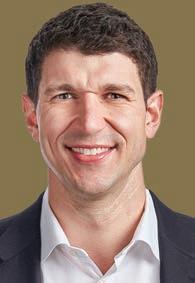
Mandala is a rising leader at Brixton Capital, elevating the multifamily investment strategies for one of the West Coast’s leading real estate investment firms. He serves as director of acquisitions. Brixton owns and operates a portfolio of over $1.5 billion and 10 million square feet of retail, multi-family, industrial and land investments across the western United States. He is driving Brixton’s ability to source primarily off-market, value-added opportunities as well as brand-new apartment communities. His adaptive investment approach to changing market conditions has established him as a rising star in the fiercely competitive multifamily arena. He has leveraged Brixton’s vertical investment approach including acquisitions, financing, property management and construction, allowing Brixton to continue expanding its geographical presence into new markets. He is an active volunteer with the Rise Against Hunger, and, prior to joining Brixton, hosted an annual golf tournament that raised more than $5,000 and toy donations for the Children’s Hospital of Orange County. He concentrates on multifamily acquisitions in Dallas-Fort Worth, Phoenix, Seattle and Salt Lake City. He is a graduate of the University of Arizona.

ANDREA CISNEROS
She leads the international tax department at RJS Law. She has helped structure billions of dollars in investments in the United States. She helps investors comply with U.S. tax laws and regulations. Also, when her U.S. clients invest or reside outside the United States, she helps them keep compliant with U.S. laws and regulations. She is a member of the La Raza Lawyers Association, and the San Diego Chamber of Commerce. She’s licensed to practice in both California and Mexico. She understands both commonwealth and statutory law and can advise her international clients. She is a graduate of the University of San Diego School of Law.
COLLINS EJIOGU
He is the chief administrative officer at UC San Diego Division of Extended Studies. The continued education institution serves a diverse population of non-matriculated students, from pre-college students in their teens to lifelong learners in their 60s and up. Nearly half of all students served are from underrepresented minority groups. He takes his duties in this area very seriously and works each day to ensure that DES is an international leader in the business of continuing education. He previously served as the director of financial operations and auxiliary services at Claremont Graduate University. He earned his master’s degree and a certificate in accounting and finance from UC Riverside. He received his bachelor’s degree in business administration from Cal State Fullerton. He is a lifetime mentor with the National Society of Black Engineers and was a McNair Scholar and mentor at Cal State Fullerton. He played a critical role in the successful execution of the UC San Diego campus-wide “Return to Learn” strategy after the COVID-19 pandemic. He led the implementation of DES’ flex-work arrangement which involved identifying a hybrid work approach which benefited both the business and its personnel and fulfilling commitments to students and partners.
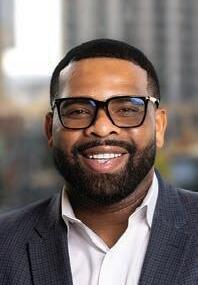
SANDIEGOMETRO.COM | NO. 3 VOL. XXXVIII | 38TH ANNIVERSARY 1985-2023 16 40 UNDER 40
SARAH BALDWIN
She is the program director at Vista Hill’s ADAPT (Accessible Depression and Anxiety Peripartum Treatment) program. She’s an extraordinary leader in a tender environment that treats a highly unseen and unacknowledged community, low-income clients that are dealing with Peri and Postpartum mental health issues. Traditionally, they have been left untreated, alone, and without support which can lead to more severe conditions, including mental health issues and homelessness. She is patient, kind, thoughtful, intuitive, and person-centered. Her appreciation for process, managing the business of the program and the extraordinary relationship she has with the County, being a County-funded program, are unprecedented.
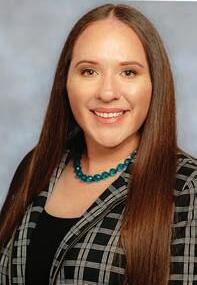
JORDAN LERNER
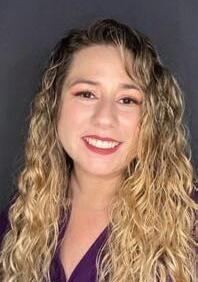
He Is the chief of staff at Host Healthcare. He has been instrumental in growing the company from a fledging startup to what is now the highest rated travel healthcare company in the United States. Host’s annual revenues are more than $800 million. It has over 600 employees. Over the past three years, Host has grown at an astonishing 1,600%. He has worked to deliver industry-best service for travel nurses and allied professionals all over the country for the past nine and a half years. He has held several important roles at Host starting as a recruiter in 2013. He maintains a servant-leader mentality. His sense of humor makes him a pleasure to work with, and he is focused on the company’s mission, values and culture. He and his wife, Amanda, and extended family are contributing members of the San Luis Rey Band of Luiseno Indians. He is a graduate of Eastern Illinois University.

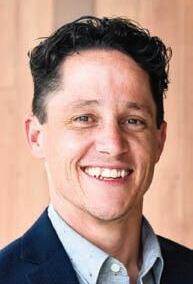
JUSTIN R. GILES
An associate at Latitude 33 who has engineered millions of square feet of development throughout San Diego County, including some of the largest commercial campuses and most important civic projects, Giles is a passionate and dedicated civil engineer and leader. Since joining Latitude 33 in 2013, he has embodied the company’s core values and injected his enthusiasm and personality into his work, emerging as a compelling leader among his peers. He has helped lead some of the firm’s and the region’s most notable developments, including Aperture Del Ma, the County of San Diego Youth Transition Campus, the Village at Pacific Highlands Ranch, and Merge 56. Merge 56 is a 72-acre mixeduse project of 242 residential units, office space and retail space which totals 500,000 square feet, including a hotel and movie theater. He is a registered civil engineer and earned his B.S degree in civil engineering at San Diego State University. He is a member of the Urban Land Institute (ULI ) San Diego-Tijuana Young Leaders Group. He is also involved in the Design Build Institute of America and coaches is son and daughter’s teams in baseball, softball and soccer.
SHEENA PEOPLES
She is an executive vice president and chief sales and service officer at San Diego County Credit Union. She is responsible for defining and implementing SDCCU’s overall operations and sales strategy. This includes implementing automation within new and existing operational processes to create further efficiencies. She was integral to the launch of SDCCU’s online banking platform. She started in SDCCU’s call center 16 years ago when there were 16 employees. Today, there are nearly 100 employees across two states. She’s won SDCCU’s President’s Service Award and is an innovative change maker who maintains infectious positivity and unwavering leadership. She is certified in sign language which means she can help with any transaction where a deaf member is involved. She won 2018 and 2019 awards for her leadership in the SDCCU call center. She has risen through the ranks to become one of the key executives at SDCCU.
17 38TH ANNIVERSARY 1985-2023 | NO. 3 VOL. XXXVIII | SANDIEGOMETRO.COM 40 UNDER 40
TYLER RENNER
He is director of media at PATH (People Assisting The Homeless). He has served the community extensively, having served two years on the North Park Planning Committee and recently completed his two-year term as the Metro West Area Director of the San Diego Democrats for Equality. He also recently joined the San Diego Pride Board of Directors. He co-founded the City of San Diego’s LGBTQ Employee resource group. In his new role at PATH, he is working to spread the word about its innovative and collaborative approaches to housing individuals experiencing homelessness. He has elevated PATH’s presence in the media by regularly securing national, statewide, and local press opportunities. He is a graduate of UC Santa Barbara.

TIMOTHY HOWLAND
He is the senior manager of public affairs and principal digital strategist at Southwest Strategies. He is the resident digital expert in supporting clients with digital strategy and grassroots advocacy on public affairs and outreach campaigns. He takes the lead on internal communications and change management practices, as well as develops and executes all things digital for national and local client accounts. He ran multiple coalition advocacy campaign for Campland on the Bay, resulting in thousands of supporter contacts to city decision makers. He started a non-profit called Mille’s Bookshelf that provides reading resources and food security to displaced children and refugee communities worldwide. He led the digital project for a major land use and development project in the city of Sierra Madre which had been the home of the Master Dolorosa Passionist Retreat Center, a longstanding historic landmark for nearly 100 years. He is a graduate of Susquehanna University.
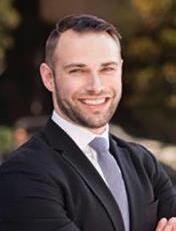
SANDIEGOMETRO.COM | NO. 3 VOL. XXXVIII | 38TH ANNIVERSARY 1985-2023 18 40 UNDER 40 BREE WONG PCL Construction HEATHER RAMSAY Biocom MATTHEW ROTA Catalent MATTHEW G. PHY Policy Advisor, SD County Board of Supervisors EMILIE VICCHIO Fed Con MIGUEL NAVA-TAPIA MCT KATIE BALATBAT Witham Mahoney & Abbott Law NIKKI HOLLOWAY DCA Planning & Architecture
HIBBARD
& Wilmer BARDIA MOAYEDI
& Wilmer STEFFI HAFEN
& Wilmer JEREMIAH BABA PAGANO Jacko Law Group
SARAH
Snell
Snell
Snell
MICHAEL CASSOLATO
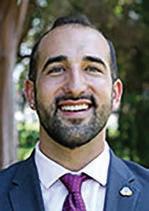
Cushman Wakefield
MELANIE HAYNES
Cushman Wakefield



THANK YOU TO EVERYONE WHO VOTED. SEE YOU NEXT YEAR!

19 38TH ANNIVERSARY 1985-2023 | NO. 3 VOL. XXXVIII | SANDIEGOMETRO.COM 40
on being
METRO’s
Help Someone Make it Home Today epath.org
KENNETH MOORE
Intesa Communications CONGRATULATIONS Tyler Renner
nominated one of SD
40 UNDER 40
24TH ANNUAL
Education Matters: Digesting an affront to voter rights
By Marsha Sutton
I thought I’d let this go, but some things just stick in your craw. Which got me curious about the meaning of the phrase.
“Stuck in one’s craw means annoyed by something unpleasant but forced to accept it. This saying comes from food which is collected in a fowl’s preliminary stomach, called a craw, where it is predigested before going on into the gizzard to finally dissolve …”
An unappetizing image for sure. But the point being that it’s an annoyance that won’t go away … or get digested easily.
And that perfectly describes my reaction to what happened at the April 11 Del Mar Union School District’s Board of Education meeting.
Instead of holding a special election, district trustees decided to appoint a replacement for disgraced Trustee Scott Wooden, who resigned in February after he was just re-elected to his fourth term in November 2022.
I couldn’t seem to digest that bizarre April 11 appointment process — which was particularly hard to swallow after the San Diego County Board of Supervisors recently decided to hold a special election to replace former Supervisor Nathan Fletcher rather than appoint someone.
The Fletcher issue is relevant because the similarities are striking. Fletcher, like Wooden, was just re-elected to his position last November. Both resigned with nearly four years left in their terms. And Fletcher, like Wooden, resigned under allegations of sexual misconduct, behavior that disgraced the offices they both held.
It would have been so much easier for the county supervisors to simply appoint someone, like Del Mar Union chose to do. But they didn’t.
Supervisors said in a May 3 San Diego
Union-Tribune story that “the length of time that remains in Fletcher’s term and the disturbance his abrupt departure has caused made it hard to justify appointing a replacement.”
The League of Women Voters weighed in on the Fletcher issue in a letter to the board that read in part, according to the UT, that the League “supports filling a vacancy through the elective process whenever possible. This is consistent with a fundamental value of democracy … that voters should have the final say on who should represent them.”
In that same story, Carl Luna, who runs the University of San Diego’s Institute for Civil Civic Engagement, said constituents may not accept a new supervisor as legitimate if they aren’t able to vote for them.
“If you reach that office in any way but election, you’re going to be a bit tainted … because basically you were voted on by four people,” Luna is quoted as saying.
Board of Supervisors Chairwoman Nora Vargas said, “I don’t think four people should be making a decision about who should be on the board, especially when we have three and a half years to go.”
Yet in Del Mar, the school board tainted the electoral process by selecting someone unknown to most constituents, because the board majority didn’t like the voters’ choice.
Betrayal
Since the DMUSD board decided not to spend the money to hold a special election, the only honorable option should have been to respect voters and the principles of democracy by supporting Danielle Roybal to fill the vacancy.
Here’s why the district board betrayed voters.
Roybal was the fourth vote-getter in the
November 2022 election, which happened only three months before Wooden’s resignation. The three open seats were filled by incumbents Wooden, Doug Rafner and Katherine Fitzpatrick.
Since the board chose not to hold a special election, Roybal should have been the obvious, logical, ethically correct choice to replace Wooden. Four individuals have no business appointing someone else when voters just months prior had their say.
As Roybal said in her public comments, “The community asks that their vote be represented.”
Of the four trustees, only Fitzpatrick supported Roybal. When she presented valid reasons why Roybal deserved the seat, she was met with crickets.
Fitzpatrick finally removed herself from the debate, saying, “For me it’s Danielle and no one else. I’ll let you guys figure it all out if you’re not going to vote for her.”
Why trustees Erica Halpern, Gee Wah Mok and Rafner chose to reject voter preference is misguided although clear, considering Roybal’s public platform.
She has been critical of DMUSD’s superintendent and the board majority over mismanagement of finances, lack of transparency, and mishandling of the special education department, among other complaints.
As a result, DMUSD Superintendent Holly McClurg and her backers on the board took exception to having Roybal join the club. Agitating for more transparency in district business and advocating for operational changes in the district’s special education department does not win you any friends in positions of power.
Regardless of anyone’s personal views, our democracy is based on voter choice — for better or worse. And three of the four trustees chose to disregard that basic
SANDIEGOMETRO.COM | NO. 3 VOL. XXXVIII | 38TH ANNIVERSARY 1985-2023 20 EDUCATION
democratic value.
After interviewing the applicants for Wooden’s seat at the April 11 meeting, board President Mok revealed all, saying that board members “should look at all the candidates and not those who ran most recently in the recent election.” In other words, forget Roybal.
Voter choice denied
In a statement Fitzpatrick gave to me after the special board meeting, she said, “It is unfortunate that my fellow trustees did not see the merits in supporting the candidate who received such overwhelming community support. … perhaps because they don’t like what she has to say or what she represents or feel threatened by it.”
Fitzpatrick said she supported Roybal because “she was the community’s top vote earner after Doug Rafner, and I respect the community’s voice. She is well-versed on the issues affecting DMUSD, advocates for transparency and community engagement, (and) she brings diversity to our board.”
Mentioning the hundreds of letters the board received in support of Roybal, Fitzpatrick said Roybal ran a strong campaign and showed “tremendous commitment to this district” — with “fire and passion.”
In her interview, Roybal listed her many qualifications and told the four board members sitting in judgment that she has a degree in finance and a master’s degree in business.
As the parent of an autistic fifth-grader in the district, her campaign message of the need for better oversight of the special education department resonated with other parents who say they have also, like Roybal, experienced inadequate care for their children.
Having a board member with a special needs child is “an added value,” said Fitzpatrick, who has three young children in the district — one in second grade, one
in kindergarten, and the youngest who will start kindergarten in 2024.
After a tortuously lengthy and awkward debate, the three trustees finally selected Alan Kholos as the interim board member. Kholos will serve until the general election in November 2024, at which time he and anyone else may run for the remaining two years of Wooden’s term.
The selection of Kholos was hardly a mandate. Mok and Halpern refused to consider anyone else, Fitzpatrick would only support Roybal, and Rafner was lobbying forcefully for applicant Darren Gretler.
Rafner only reluctantly voted for Kholos after McClurg and Mok reminded him that a divided board that couldn’t agree would mean the district would be forced to hold a costly special election.
Interestingly, Kholos served on the Del Mar school board from 2012 to 2015, when he resigned after a work relocation. Gretler was appointed to replace Kholos.
Kholos no longer has children in the district and did not run for election in November 2022. In fact, the only applicant for the appointment in April who ran for the seat last November was … Roybal.
Democracy thwarted
The moment when I felt I couldn’t “digest” this appointment process happened after I heard trustee Rafner say this at the April 11 meeting: “I can’t think of anything that would be worse for kids than to put the district through the expenditure of hundreds of thousands of dollars because their candidate didn’t win.”
The not-so-veiled threat was regarding Roybal’s supporters, who have made noises about gathering signatures on a petition to force a recall of the appointed applicant should that not be Roybal, which would require a special election.
I did not hear back from Rafner after I wrote him this email: “The fact is that Roybal did win, and you failed to support
her. I’m unclear why the board refused to acknowledge that she put in the time, money and effort last November and none of the other candidates seeking to be appointed did any of that.”
With the previous election held just three months prior to Wooden’s resignation, it can be argued that the voters, if any board members care what voters want, had already spoken. The democratic process should have been followed. Voter preference was clear.
But Rafner, Mok and Halpern refused to even consider Roybal. Instead, the public was subjected to a long debate about the type of candidate the board wanted, rather than who the voters wanted.
Kholos seems a decent person. But if he didn’t want to run in November, why did he suddenly decide he wanted to serve in April? It’s just a back-door way in, without putting in the time, money and energy walking door to door campaigning as Roybal did.
When a governing body chooses someone who aligns most closely with their own and their superintendent’s personal priorities, but who doesn’t necessarily reflect the concerns of constituents, it is a tainted appointment — one that may ultimately, as Carl Luna suggested, be seen as illegitimate.
With Roybal coming in fourth in the November 2022 election — and as the only candidate from the election to seek the appointment — she was the winner in many ways. Except the one that counts. And that sticks in my craw.
21 38TH ANNIVERSARY 1985-2023 | NO. 3 VOL. XXXVIII | SANDIEGOMETRO.COM EDUCATION
Marsha Sutton lives in Carlsbad.
Battling Godzilla: Inflation,
Recession and the fight against
the COVID-19
By Douglas Page
economy
There may be no greater economic menaces than inflation and recession, which alone and combined can metamorphose into a towering, saber-toothed Godzilla, destroying companies, mangling careers and, sometimes, vanquishing governments.
Just see why Ronald Reagan and Bill Clinton successfully defeated incumbent presidents so they could take a turn at saving the day, economically at least, from the Oval Office. If inflation takes a turn for the worse or there’s a deep-dive recession, President Biden could suffer the same fate as some of his predecessors.
After the 1930s Great Depression, which helped put Franklin Roosevelt into the White House, the 1980 recession remains the country’s most significant economic downturn, with the biggest business news story that year about the nation’s third largest automobile company, Chrysler, receiving a $1.5 billion loan from the federal government so it could remain open. The unemployment rate reached 7.6%, about 8 million people, and inflation closed in on 14.5% that summer, according to the Federal Reserve, a time when people were likely solidifying their choice for the next president, Reagan or the incumbent, Jimmy Carter.
While the 2023 economy isn’t nearly as battered as 1980’s –unemployment is at 3.4% or nearly 6 million people and inflation is 4.9% -- the biggest surprise might be that government officials appear to be about as eagle-eyed at recognizing inflation and the prospect of a recession as their predecessors in the pre-Paul Volcker era of the 1970s.
As Stephen D. King, an economics advisor at HSBC bank in London and author of We Need to Talk About Inflation: 14 Urgent Lessons From The Last 2,000 Years reminds us, consider

We Need to Talk About Inflation: 14 Urgent Lessons From The Last 2,000 Years
(Yale University Press, 212 pages, $28.00)
Fed Chairman Jerome Powell’s comments in Jackson Hole, Wyo., in August 2021, 11 days after the U.S. Bureau of Labor Statistics released the Consumer Price Index, which foretold what was coming, with food prices up 3.4% in a year’s time and gasoline prices vaulting nearly 42% in the same period:
“… longer term inflation expectations have moved much less than actual inflation or near-term expectations, suggesting that households, businesses and market participants also believe that current inflation readings are likely to prove transitory and that, in any case, the Fed will keep inflation close to our 2% objective over time,” he said.

That’s reason enough to read this book. Not only is it an essential piece of work for anyone who’s experienced an economy gone haywire, it’s also critical for anyone who wants to understand that while inflation can be dormant, it’s never eliminated.
“The re-emergence of inflation represents something of a watershed moment in the development of the global economy,” writes King. “For much of the last three decades, both policymakers and investors focused much more on the dangers of deflation, a world in which prices and wages threatened to fall rather than rise, and in which interest rates could drop to zero or marginally below.”
Those who should know, like Powell and Treasury Secretary Janet Yellen, writes King, never saw the return of inflation as likely. It was “unimaginable,” he said, which provides some insight as to why they described it as “transitory” until, suddenly, they realized, gosh golly, it wasn’t.
“Policymakers couldn’t agree on why inflation was back,” King writes. “Some blamed the COVID-19 pandemic. Others blamed
SANDIEGOMETRO.COM | NO. 3 VOL. XXXVIII | 38TH ANNIVERSARY 1985-2023 22 BOOK REVIEW
President Putin. Few, however, were prepared to admit that inflation’s return was, perhaps, a reflection of a more deeprooted problem.”
In addition, King writes, the prognosis was that inflation would drop out of sight – quickly.
“Central bankers’ forecasts of inflation suggested that any near-term increase would be transitory: within two or three years, inflation would return to ‘target’ –in most cases a number close to 2%,” King adds.
Given that latest report from the U.S. Bureau of Labor Statistics showed inflation down from 8.3% a year earlier, Powell and Yellen’s “transitory” moniker may yet be proven to be an apt description.
Still, what King does so well is describe how COVID-19 lockdowns sparked inflation, showing who benefited and who didn’t from elevated prices, and why politicians sometimes prefer inflation. A key problem with the pandemic’s lockdowns was that it prevented markets from operating with real-time pricing information.
“When lockdowns ended and markets reopened, a peculiar state of ‘economic ignorance’ was revealed. Underlying supply and demand conditions had undoubtedly changed. Yet many prices had been preserved in aspic from months earlier,” the author writes.
But that wasn’t the worst of it. As King shows, when the economy becomes challenging, government officials often see the solution as flooding it with money, thereby lowering its value.
“The printing press is a temptation precisely because it is an alternative to tax increases or spending cuts, a stealthy way in the short run of robbing people of their savings, particularly given the predilection of policymakers to blame inflation on ‘forces beyond their control,’” he writes.
The pandemic was certainly an example of a force beyond the control of
lawmakers and President Trump. The CARES Act, passed by Congress shortly after the implementation of the lockdowns in March 2020, which provided more than $2 trillion in financial relief to businesses, individuals, and their families, is now considered by the Fed to have sparked inflation.
But as the U.S. Bureau of Labor Statistics points out, unemployment surged as COVID-19 hit the country, measuring at 13% in 2020’s second quarter. It’s no surprise that thenU.S. Senate Majority Leader Mitch McConnell (R-Ky.) endorsed the legislation, saying, "No economic policy can fully end the hardship so long as the public health requires that we put so much of our commerce on ice. This isn't even a stimulus package. It is emergency relief. Emergency relief."

So, if inflation, recession, unemployment, or a pandemic rear their ugly heads, either alone or combined, it doesn’t matter if an elected official is a fiscal conservative or a free-spending liberal. The money’s printing press, King warns in lesson six, is always a possible solution to what ails the economy.
The biggest criticism of this book is that, too often, King doesn’t identify which central bankers he’s referring to. He also doesn’t delve enough into supply chain and labor issues that resulted due to COVID-19. Still, this is an outstanding piece of scholarship, especially in a time of great economic and political uncertainty. King shows how inflation comes about and what happens when it strikes. The book is well-sourced and a tremendous first take on the injuries caused by COVID-19 on the British, European and U.S. economies.
23 38TH ANNIVERSARY 1985-2023 | NO. 3 VOL. XXXVIII | SANDIEGOMETRO.COM BOOK REVIEW
Douglas Page can be reached at dpage@sandiegometro.com.
Jamul Casino plans new Hotel
Having recently secured a $515 million loan , the Jamul Casino is now able to refinance existing debt and build a long-planned hotel.
The 16-story boutique hotel will have 200 rooms, including 52 suites, and be accompanied by a six-story parking structure with 350 parking spaces. Casino guests will have direct access to the hotel through a climatecontrolled pedestrian skybridge. The hotel lobby will include a 4,800 square foot restaurant with sweeping views of the surrounding area. There will be retail space and meeting and banquet facilities, a full-service spa and salon

with an outdoor deck, and a fitness center.
There will be luxury guest rooms and suites for VIP guests, and an 11,000 square foot rooftop pool deck, including a jetted hot tub, cabanas and a rooftop bar. The casino says the hotel is being built to achieve AAA’s Four Diamond designation.
Mary Cheeks, Jamul’s president and general manager, says the hotel “will allow Jamul Casino to build on its success in Southern California’s highly competitive gaming market. Our guests have overwhelmingly cited a hotel as their most-desired new

BUSINESS
development .”

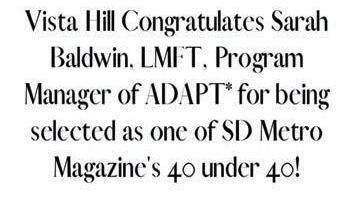
Erica M.Pinto, chairwoman of the Jamul Indian Village and chairwoman of its development corporation, said that in only a few short years “we have capitalized” on the casino’s success to develop a luxury hotel. The hotel is being designed by JVJ Architecture.,








The casino opened in October 2016, creating 1,200 permanent jobs in the surrounding area. It has made significant investments since by building a rooftop event center, a new poker room and major renovations to the high limit rooms and marketplace food court.

The Jamul Indians are one of 13 federally recognized tribes that are part of the Kumeyaay Nation, with roots in eastern San Diego County. The tribe funds educational opportunities, health care and housing initiatives for its members, as well as projects and services which benefit the surrounding community.

25 38TH ANNIVERSARY 1985-2023 | NO. 3 VOL. XXXVIII | SANDIEGOMETRO.COM BUSINESS
D 4 4 nd a s r ER 0 0 Howlla w hy tomiT t gis eta Str lat Digi cip in i aff A lic P of regana M r nio es ul gr C es igetart S t es whtuoS
New Bill to Ban ‘Sell By’ Date on Food Labels in California Receiving Bipartisan Support
By Elizabeth Dowell | The Epoch Times
A California bill that would remove “sell by” dates on food—to cut down on consumers needlessly throwing away otherwise still edible products—is working its way through the legislative process, having recently passed in two committees and is now waiting to be heard by a third, which reviews bills that have fiscal impacts.
Assembly Bill 660, authored by Assemblywoman Jacqui Irwin (DThousand Oaks) would set new standards by requiring expiration labels to use the phrases “best if used by” and “use by” to communicate peak freshness and food safety, and completely ban the terminology of “sell by” dates, starting January of 2025.
Existing law requires food—such as eggs and produce—to be tagged with “sell by” stickers for distributors or retailers to know when to stock the items. However, according to Irwin, they are confusing and lead to unnecessary food waste.
“We have all opened our fridge or pantry and had to wonder whether our food is still good. AB 660 will eliminate confusion with
food labeling and reduce food waste, saving consumers money and meaningfully impacting climate change,” Irwin said in a May 2 press release.
Irwin cited data from the Food and Drug Administration in the news release, that confusion caused by current date stickers causes around 20 percent of food waste.
She pointed to a study released in April by ReFED—a national nonprofit working to cut food waste—which found that changing the labeling system could save 265 billion gallons of water and stop 796,000 tons of food waste from entering landfills nationwide per year.
The goal in passing the bill, according to Irwin, is to fight climate change by lessening the amount of food that ultimately ends up in such landfills. Such decomposing food emits methane gas, which is over 80 times more powerful than greenhouse gases like carbon dioxide.
“About six million tons of food are wasted in California each year, much of which rots in landfills and creates harmful methane

emissions,” Gracyna Mohabir, Policy Associate at Californians Against Waste— a nonprofit advocate for waste and recycling legislation and one of the bill’s sponsors— said in the press release.
Another sponsor for the bill is the Natural Resources Defense Council—an international nonprofit environmental organization.
“Addressing so-called ‘expiration date’ labels, a surprisingly substantial systemic cause of food waste, will help our environment, our health, and our economy,” Andrea Collins, Senior Sustainable Food Systems Specialist for the nonprofit, said in the same press release. “Despite past measures, confusion over the dates on food is still leading to an enormous amount of wasted food.”
The bill passed the Assembly’s Agriculture and Health committees with majority bipartisan support and few oppositions. It will now be considered by the body’s Appropriations Committee.
SANDIEGOMETRO.COM | NO. 3 VOL. XXXVIII | 38TH ANNIVERSARY 1985-2023 26 AGRICULTURE
A box of food scraps that will be composted sits on the floor at the Norcal Waste Systems transfer station in San Francisco on April 21, 2009. (Justin Sullivan/Getty Images)








27 38TH ANNIVERSARY 1985-2023 | NO. 3 VOL. XXXVIII | SANDIEGOMETRO.COM AGRICULTURE
Roped in By Wyoming
By Marlise Kast-Myers | Photos by Benjamin Myers
We have this habit—my husband and I— of traveling to a destination with one eye on the possibility of it becoming our next home. It’s a twitch to move where the grass is greener, or the water bluer, or the neighbors further away. When we now reflect on places we once considered, we realize that we had our finger on the pulse of something big. Tulum, San Miguel de Allende, Costa Rica, Cabo, Montana—the list of “we knew back when” goes on, but instead of going “all in,” we went home.
That is, until Wyoming. Neither of us had ever been, nor did we know a great deal about the Equality State, other than it was home to national parks and had the lowest population density in the nation.
As a couple who appreciates wide open spaces—and values land over views—we booked a flight to Wyoming. Our plan was to visit Sheridan, Dayton, Gillette, and Buffalo.
After a layover in Denver, we landed at
the small Sheridan County Airport. Standing at the Avis booth was a young man holding out a set of car keys. Clearly, he was expecting us. The clock was approaching 10 p.m., as he pointed us toward the parking lot where our rental car was waiting.
And we were off, to the Historic Sheridan Inn. Dating back to 1893, the hotel revealed her age through creaky floorboards and Buffalo Bill memorabilia, a nod to the Wild West legend who had co-owned the property and resided there from 1894 to 1902. Today, each of the 21 rooms are themed around characters from his life, ranging from Sitting Bull to Annie Oakley. For less than $150 a night, we stepped back in time with perks like a footed tub, stone fireplace, and wide-plank porch where Buffalo Bill held show auditions, and Ernest Hemingway wrote A Farewell to Arms.
Across the street was Market Hall, Sheridan’s historic railroad depot reimagined
into a café. Breakfast vouchers from the hotel satisfied our grab-n-go needs with pastries and coffee for our morning hike.
As active travelers, we always aim to connect with a destination one footstep at a time. The 45-minute drive to Tongue River Canyon set the tone from the open highway, perfectly paved and void of potholes and people.

The horizon had no end, stacked in layers of green, brown, blue, and white. Road signs pointed toward Yellowstone and Grand Teton, teasing something beautiful without overshadowing the splendor. Lines of irrigation wheels pushed forward like an invading army, hydrating crops for grazing cattle, wild turkey, and pronghorn antelope. Proclaiming a farmer’s toil were bales of hay bundled in open fields like cinnamon buns on a baking sheet.
It had been less than 24 hours since we arrived in Wyoming, and already, we were pretty smitten. At the foothills of the Big
SANDIEGOMETRO.COM | NO. 3 VOL. XXXVIII | 38TH ANNIVERSARY 1985-2023 28
Meadow views above Tongue River Canyon.
Horn Mountains, the trail along Tongue River Canyon awakened our souls with stream crossings, natural arches, and golden meadows. The 4.7-mile out-and-back hike turned into 7 when our phone signal dropped, as did the trail marker at the turnaround point. A fellow hiker informed us the signpost was missing, and that we had gone too far. We didn’t care.
In fact, we felt we hadn’t gone far enough. Wyoming has a way of doing that, by tempting one view with a more pristine one around the corner. Already on day one, there was a feeling that we had stumbled onto something special, a secret kept hidden from developers who might super-size the destination by plucking away its rugged and rural rawness.
As SoCal residents, we wanted to join the good guys and unleash our inner cowboy somewhere in Wyoming. Well, it wasn’t in Dayton. Darling as can be, the tiny town was small enough to spit through. We stopped by the Mercantile, selling everything from ice cream to antiques. It was as if the locals awakened with the ringing of the shopkeeper’s bell, and then closed down when we drove away.
Bypassing Sheridan, we drove further south to Fort Kearney State Historic Site, a national landmark along the Bozeman Trail. It was here where the Fetterman and Wagon Box battles took place in 1866 and 1867. During the Fetterman battle, 81 soldiers were killed by Indian warriors, making it one of the greatest defeats for the US Army. The following year, Indian forces attempted to repeat their victorious outcome during the Wagon Box Fight, only to be overpowered by soldiers armed with breechloading rifles.
Our guide had tears in her eyes as she pointed us toward the historic battlefield, recounting the bloodshed at Fort Phil Kearny. It didn’t take long before we saw the power Wyoming’s past had on its people. They cling to the chronicles, never throwing out the old to make room for the new.

We saw this firsthand back in Sheridan, where we went for a stroll on Main Street. Dozens of buildings were listed on the National Register of Historic Places including the WYO Theater, Sheridan County Courthouse, and, of course, The Mint — a gathering place for locals since 1907.
During Prohibition, The Mint became a cigar and soda shop, while a speakeasy secretly operated in the back room. Ice was delivered by horse-drawn carriage and handed off to bartenders serving stiff drinks to cowboys and ranchers. Not much has changed over the years. Covering the walls were firearms, photographs, and game mounts including caribou, bobcat, wolf, bear, and a Texas Longhorn rack measuring 7-feet across. It’s not the type of place where you order a glass of wine, but rather a whiskey poured like it will be your last.
Each shop on Main could have doubled as a museum, like the White Swan Barbershop from 1904, with its impressive collection of barbershop memorabilia; and King’s Saddlery, a working saddleand-rope shop selling tack and western supplies.
There are, however, some new kids in town, like Bighorn
29 38TH ANNIVERSARY 1985-2023 | NO. 3 VOL. XXXVIII | SANDIEGOMETRO.COM
Mountain Axe where I failed miserably at axe throwing, and my husband repeatedly hit the bullseye. The other newbie was Smith Alley Brewing Company where we shared BBQ brisket, burgers, and beers.

The following morning, we hit the road toward Gillette. Among our many detours was the Brinton Museum. Located in the Bighorn Mountains, the historic Brinton Ranch was just as impressive as the museum itself, housing a rare collection of Western and American Indian art.

The day’s most impressive masterpiece, however, was Devils Tower National Monument. In the distance, we could see the geological formation pushing against the sky, rising 1,267 feet above the Belle Fourche River. From the base, were specs of color peppering the tower, each one a brave rock climber scaling its parallel cracks.
Tattered scarves blew in the wind, knotted around branches and trunks. These sacred cloths represented the spiritual connection that over 20 Native American tribes have had with the Tower. During our hike along Red Beds Trail, we crossed paths with white-tailed deer and prairie dogs, living their best life among the Ponderosa pines and Black Hills.
En route toward Gillette, we detoured toward Ucross where writers, composers, and artists can set up residency at a 20,000-acre ranch. Among acclaimed works completed at Ucross were Annie Proulx's The Shipping News, Elizabeth Gilbert's Eat Pray Love, and Ricky Ian Gordon's operatic adaptation of The Grapes of Wrath.
In a surreal setting like Ucross, it’s no surprise that the creative process flows for so many artists. The place was still and silent, with a feeling as if someone forgot to lock up for the season. Our goal was
to get lost in scenery, turn onto barren roads, and enter breathtaking spaces that called our name. Ironically it was a stone chapel that had us pushing the brakes.
The church was empty, yet open, as if yearning for a passing stranger to admire its beauty. Each stone had a story, transported from Montana homesteads dating back to the 1800s. Casting beams of light were stained-glass windows, shining down on wooden pews sourced from a historic church in Buffalo. From the hand-hewn timbers to the ridge-beam rafters, it was the type of chapel that made you want to stop and pray.
We were both quiet enroute to Gillette, mesmerized by the landscape and wildlife fronting the big open sky. Below a duvet of marshmallow clouds stood deer, antelope, horses, and cattle— grazing freely as if beast owned man. Snaking through borderless plains were rivers and creeks, broken only by barns and ranches tucked behind tree lines. Back on the highway, it seemed eerily empty, as if we were the ones left behind. It was this in-between space from town-to-town that we loved most, regardless of the creature comforts we found in Gillette.
That night we slept at Home2 Suites by Hilton, centrally located near restaurants like The Prime Rib, where we capped the day with bacon wrapped dates, steak with fries, and fig pizza. Over dinner the conversation of “what if” began, throwing my mind into the possibility of moving to a state I’d only known for three days.
The following morning, we dropped the topic and instead visited the Frontier Relics & Auto Museum. Inside the 13,000-square-foot warehouse were vintage scenes recreating a drive-in theater, a model railway, and a soda fountain with pinball machines and other memorabilia. The collection of classic cars and motorbikes—all in
SANDIEGOMETRO.COM | NO. 3 VOL. XXXVIII | 38TH ANNIVERSARY 1985-2023 30 TRAVEL
The Occidental Hotel in Buffalo dates back to 1880. A night of line dancing at TA Ranch.
mint condition—were backdropped by neon signs and gas pumps.

Going back further in time, we drove to Buffalo, home to the Occidental Hotel & Saloon founded in 1880. The famed hotel became a watering hole and resting place for cowboys traveling along the Bozeman Trail. Among its many guests were Buffalo Bill Cody, Teddy Roosevelt, Calamity Jane, and Butch Cassidy and the Sundance Kid who rode to the Occidental from their hideout at the nearby Hole-in-the-Wall.
Despite the years, the Old West personality remains, right down to the saloon’s original back bar, and the bullet holes in the walls. Attached to the Occidental was Busy Bee Cafe, where high balls are cheaper than beer. A bison burger and malt shake hit the spot before we explored Buffalo.
Located between Yellowstone Park and Mount Rushmore, the small town has an antique shop, cafe, barbershop, and a steepled church. Unlike Main Streets that aim to recreate the past, Buffalo seems to have never left it—almost frozen in time with little concern for growth or development.
In full California mode, I wanted a vanilla latte with almond milk (not to be confused with a Starbucks). Happily, the Mini Place— aka Cowgirl Coffee—served us well, with all the caffeine and syrups our hearts desired. Next door, Bucking Buffalo Supply Co lured us with the scent of leather and wool, stacking up plaid shirts, cowboy hats, boots, and Pendleton throws.
With two days left on our quest, we had yet to unleash our inner cowboy, so we headed to the nearby TA Guest Ranch. Dating back to 1892, this working cattle ranch was the site of the Johnson County War. The original buildings on the Wyoming homestead have been restored into 13 guest rooms framing the Ranch House where massive entrees of ribeye, bison steak, and lamb chops are served. I went mellow with the rainbow trout and a tall glass of California wine.
That first sip triggered the conversation, “Would you miss California if we moved?”
My husband shrugged, mentioning something about getting to know Wyoming a little better. And so, we did, during a wagon ride, during line dancing in the barn, and during our horseback ride across the 8,000 acre-property. With the owner’s daughter as our guide, we learned that she left her career as a Denver lawyer to become a cowgirl back at the family ranch. She was drawn to the lifestyle where dependence on your neighbor overpowers politics, religion, race, and gender.
Today, she helps wrangle the 45 horses with the other cowgirls who rehabilitate the herd through horse whispering. We asked her if the grass was greener in Wyoming, and she told us to come back in winter.
With one final day on our schedule, we spontaneously drove six hours into the heart of Wyoming—going wherever the road would lead us. Along the way, we grabbed beers in Cody, and cut through Crazy Woman Canyon, unveiling towering cliffs, flowing creeks, and some of the best of Wyoming’s wilderness. We passed weatherworn cowboys corralling herds of cattle, stopping only to tip their hats in acknowledgment. The horizon was endless, with views a camera could never capture. Turning toward my husband, I asked him why California didn’t have a big sky like Wyoming.
“Because we can’t see that far,” he answered.
He was right. Back home, our landscape was blocked by eye-level construction and obstacles that hindered the view. In Wyoming, there wasn’t too much to shade the horizon other than nature itself.
It was after dark by the time we arrived back at TA Ranch, greeted by our cowgirl who asked if we had found our “home.” We told her we hadn’t, but we were getting pretty darn close.
“Keep exploring,” she said, grabbing the brim of her hat. “Wyoming will rope you in soon enough.”

31 38TH ANNIVERSARY 1985-2023 | NO. 3 VOL. XXXVIII | SANDIEGOMETRO.COM TRAVEL
SDMETRO’S 2023 Men of Influence COMING IN JULY:
Marlise Kast-Myers as is an award winning travel writer

PRSRT STD US POSTAGE PAID PERMIT #3175 SAN DIEGO, CA



























































































